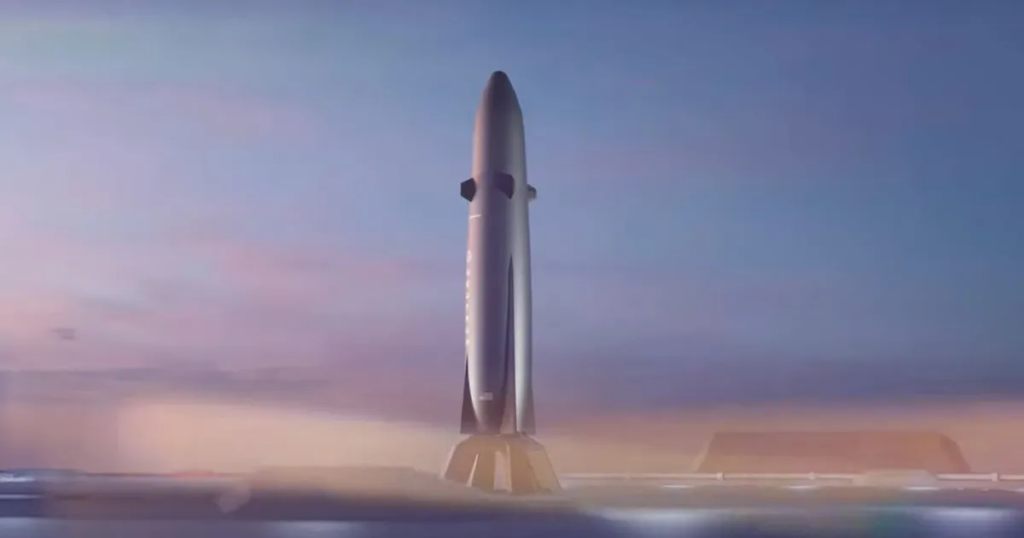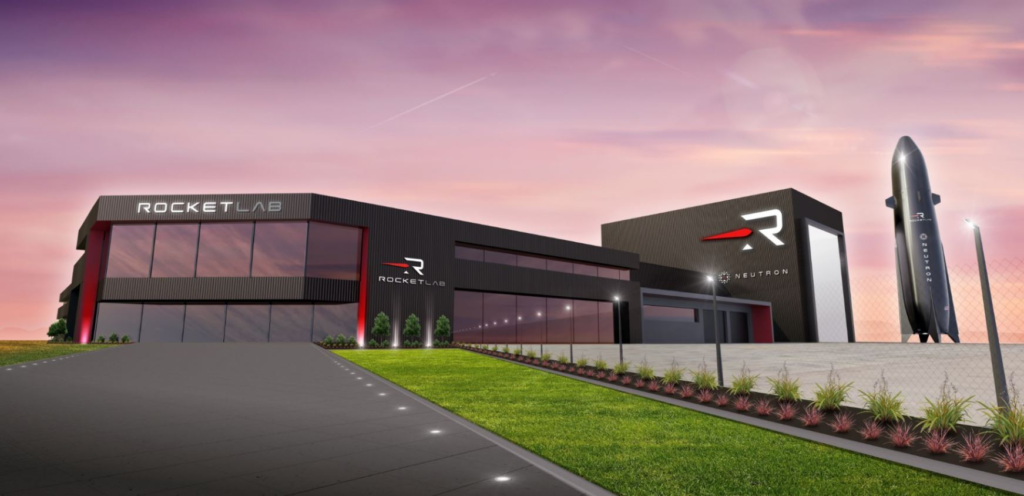
An Update On Rocket Lab’s Neutron Launch Vehicle
In the last few months alone Rocket Lab has reached a few different milestones. This included the successful launch of CAPSTONE to the Moon and a first ever in the launch cadence department with three successful launches within just over a month of each other. Not to mention the company’s continued work on Neutron, meant to change how Rocket Lab accesses space.
Neutron is a next generation reusable rocket designed for mega constellation deployment, deep space missions, and human spaceflight. While there have not been any major updates regarding the rocket since some of the initial announcements, CEO Peter Beck has recently given us a better idea of Neutron and its manufacturing process’s progress. He has done this in a few different interviews in the last few months.
Specifically, the Neutron Production Complex and launch pad for our Neutron rocket will be located at the NASA Wallops Flight Facility and Mid-Atlantic Regional Spaceport on Virginia’s Eastern Shore. This facility is just as if not more important than the rocket itself. Here I will go more in-depth into the recent updates from Peter Beck, the launch vehicle itself, and what to expect in the near future.
Peter Beck Updates

Some of the original news on Neutron came late last year. Specifically, on December 2nd, 2021, Rocket Lab revealed new details about the next generation Neutron launch vehicle and its future. At the time of this announcement, Peter Beck was quoted saying, “Neutron is not a conventional rocket. It’s a new breed of launch vehicle with reliability, reusability and cost reduction is hard baked into the advanced design from day one. Neutron incorporates the best innovations of the past and marries them with cutting edge technology and materials to deliver a rocket for the future. More than 80% of the satellites to be launched in the next decade are expected to be constellations, which have unique deployment needs that Neutron is the first vehicle to address specifically. Like we did with Electron, rather than starting with a traditional rocket design, we focused on our customers’ needs and worked back from there. The result is a rocket that is right-sized for market demand and can launch fast, frequently and affordably.”
After this original announcement, we went a few months without updates on the project. This was the case until February when Rocket Lab revealed it had selected Wallops Island, Virginia, as the location for its first launch site and extensive manufacturing and operations facilities. This was a big deal as it meant the company was not far away from starting construction on the facility expected to build and launch Neutron. Finally, one of the last official updates from Rocket Lab came only months later in April. Here they broke ground on the construction of a state-of-the-art rocket production complex where the Company’s Neutron launch vehicle will be manufactured. During this milestone, Peter Beck pointed out, “Neutron is a next generation rocket designed to serve the needs of the civil, commercial and national security space markets and we’re proud to be delivering that capability from right here in Virginia. Today, we take a major step toward resilient and assured access to space for the nation – a capability that has become increasingly urgent in recent times. We are excited to grow Rocket Lab’s presence in Wallops, to add highly-skilled jobs to the local economy, and to play a part in reinforcing the Eastern Shore’s strong legacy as an aerospace hub. We are grateful for the continued support of the Commonwealth of Virginia and Accomack County for its enthusiasm in helping to establish Rocket Lab and Neutron on the Eastern Shore.”
However, in addition to these official updates over the past few months, the CEO has shared some additional information through recent podcasts and general updates. Specifically, in a podcast only weeks ago with Manuel Mazzanti, Peter Beck was asked about the progress of Neutron and Launch Complex 2. He began by talking about the launch complex and said, “There’s a big empty field for ages, while you’re doing all the design and certification, and licensing, and all the rest until all of a sudden stuff starts coming in the ground.” He clarified by saying “It’s an exciting time because you know stuff is going into the ground now at LC-2.” In addition, he pointed out, “Neutron’s pads are all defined and we’ll be pouring concrete and doing all those kinds of things here pretty shortly.” This is exciting news as it confirms the construction is most definitely underway and some of the necessary infrastructure should be starting right about now.
He went on to talk about Neutron and the launch vehicle’s progress. He said, “There’s a whole bunch of stuff going on, and same with the launch vehicle. Tremendous amount of design and analysis, and now we’re starting to build full scale articles which is super fun to see giant tank molds and bits and pieces.” This confirms that not only is the site itself making progress, but even Neutron is being developed at a fast pace with different molds and components starting to be worked on.
Neutron & Its Facility

Now that we know more about some of the recent updates from Peter Beck, we can take a closer look at the rocket itself and the facility expected to create it. The Neutron Production Complex and launch pad for its Neutron rocket will be located adjacent to and within the NASA Wallops Flight Facility and Mid-Atlantic Regional Spaceport on Virginia’s Eastern Shore. The complex will be home to a rocket production, assembly, and integration facility, as well as a dedicated launch pad for the Neutron rocket located on the southern end of Wallops Island. The estimated 250,000 square foot state-of-the-art complex will be constructed on a 28-acre site adjacent to the Wallops Island Flight Facility and will include a Launch Control Center, Rocket Lab’s fifth global operations center for launch activities and on-orbit operations. To support rapid production of the Neutron rocket, current plans for the complex include automated fiber placement robotic production systems capable of laying up meters of Neutron’s new, specially formulated carbon composite structures in minutes. As a reusable rocket, Neutron is designed to land back on the launch pad after a mission and from there it would be returned to the production complex for refurbishment and re-flight.
The manufacturing complex will be located within proximity of Rocket Lab Launch Complex 2, the Company’s launch site for the Electron launch vehicle, the second most frequently launched U.S. rocket annually since 2019. Rocket Lab’s Neutron Production Complex is expected to create as many as 250 jobs in Virginia. Neutron is Rocket Lab’s next generation launch vehicle in development, designed to lift 8-tons of payload and to provide a tailored launch solution for satellite mega-constellations. Neutron’s unique design, materials, propulsion, and reusability architecture also make the launch vehicle ideal for assured access to space for the nation’s most critical missions, deep space exploration, and potentially human spaceflight. Neutron will be the world’s first carbon composite large launch vehicle, powered by in-house designed and manufactured Archimedes reusable rocket engines and an advanced upper stage to enable high performance for complex satellite deployments. Specifically, Archimedes is a reusable liquid oxygen / methane gas generator cycle engine capable of 1 meganewton thrust and 320 seconds of ISP. Seven Archimedes engines will propel Neutron’s first stage, with a single vacuum optimized Archimedes engine on the second stage. Neutron’s lightweight carbon composite structure means Archimedes does not need the immense performance and complexity typically associated with larger rockets and their propulsion systems. By developing a simple engine with modest performance requirements, the timeline for development and testing can be drastically accelerated.
Rocket Lab selected Virginia as the location of its Neutron expansion on the strength of the extensive support from the Commonwealth of Virginia, in particular the Virginia Economic Development Partnership working alongside Accomack County, the Virginia Commercial Space Flight Authority (Virginia Space), and the General Assembly’s Major Employment and Investment (MEI) Project Approval Commission. As part of the Commonwealth’s proposal, $30 million has been set aside for infrastructure and operational systems improvements to the Mid-Atlantic Regional Spaceport where the Neutron launch site will be located, along with $15 million from the MEI Project Approval Commission in site improvements and building construction in support of Neutron.
Conclusion
It has been around 8 months since Rocket Lab’s initial announcement of Neutron. Since then we received more information on the launch facility for the Rocket and even watched the company break ground in Virginia. While we haven’t received any other very significant updates since then, CEO Peter Beck provided a few interviews recently giving some additional information. We will have to wait and see how it progresses and the impact it has on the space industry.
